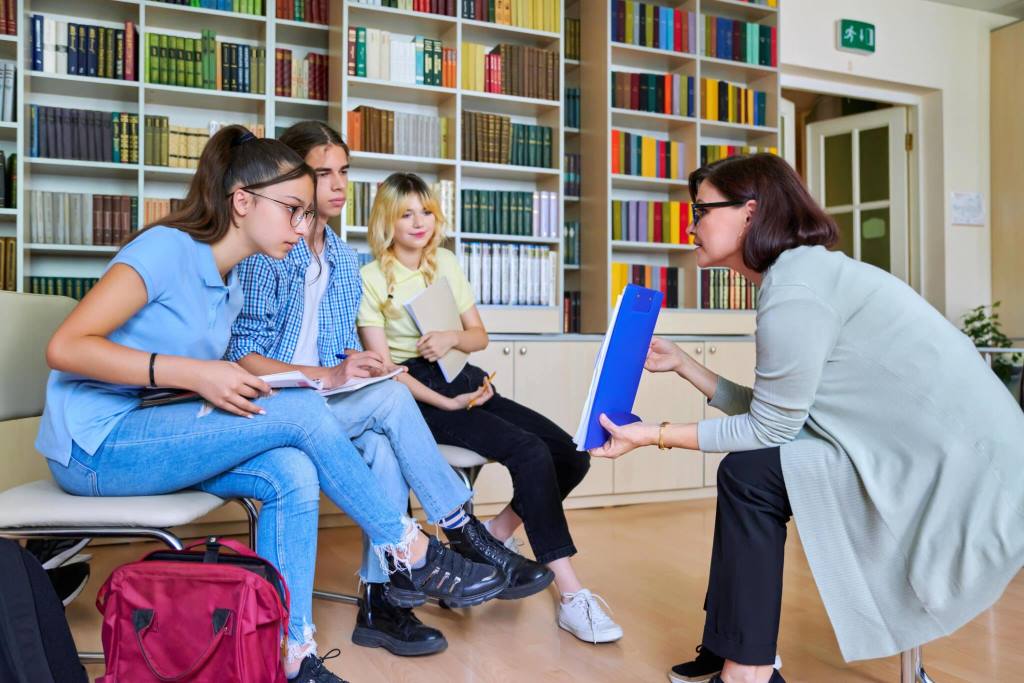In the realm of education, the significance of nurturing self-esteem in students cannot be overstated. Self-esteem lays the foundation for a myriad of cognitive, emotional, and social development processes.
As educators and stakeholders in the academic journey of students, it is imperative to delve into the intricacies of how self-esteem impacts their growth and overall well-being.
This article aims to explore the multifaceted role of self-esteem in student development, shedding light on its importance and implications.
Understanding Self-Esteem
“What is self esteem?” can be understood as the subjective assessment of one’s own value, comprising sentiments of self-worth, self-respect, and self-assurance. It serves as the filter through which individuals view themselves and their competencies.
Psychologist Nathaniel Branden famously depicted self-esteem as “the reputation we develop within ourselves,” highlighting its internal nature and personal significance.
In essence, self-esteem encapsulates how individuals perceive their worth and abilities, profoundly influencing their thoughts, emotions, and actions.
The Importance of Self-Esteem in Student Development
In the journey of student development, self-esteem stands as a cornerstone, shaping academic performance, social interactions, and overall well-being. Self-esteem fuels confidence, resilience, and motivation, enabling students to navigate challenges with a sense of worth and capability.
It serves as a buffer against stress and anxiety, fostering mental health and emotional stability. Recognizing its pivotal role, educators and parents must cultivate environments that nurture and bolster self-esteem, laying the foundation for holistic student growth and success.
1. Academic Performance
A strong sense of self-esteem is closely linked to academic achievement. Students with high self-esteem are more likely to approach challenges with confidence and resilience.
They are inclined to set higher academic goals and exhibit greater perseverance in pursuing them. Conversely, students with low self-esteem may doubt their abilities, leading to a fear of failure and a reluctance to engage in academic endeavors.

2. Emotional Well-being
Self-esteem plays a pivotal role in shaping students’ emotional well-being. A healthy level of self-esteem provides a buffer against stress, anxiety, and depression.
It fosters emotional resilience, enabling students to cope effectively with setbacks and adversities. Conversely, low self-esteem can leave students vulnerable to negative emotions, hindering their ability to navigate the complexities of adolescence and academic pressures.
3. Social Relationships
The development of positive social relationships is intricately intertwined with self-esteem. Students with a healthy self-esteem are more likely to form secure attachments, communicate assertively, and establish boundaries in their interactions with peers.
They exhibit greater empathy and are better equipped to navigate conflicts constructively. Conversely, students with low self-esteem may struggle with social anxiety, isolation, and difficulties in establishing meaningful connections.
Factors Influencing Self-Esteem in Students
Several factors intricately influence students’ self-esteem. Social interactions, peer acceptance, and family dynamics significantly impact how students perceive themselves.
Understanding these multifaceted influences is crucial for educators and caregivers to create supportive environments that foster healthy self-esteem in students, empowering them to thrive academically, socially, and emotionally.
1. Family Environment
The family environment plays a crucial role in shaping students’ self-esteem. Supportive, nurturing family dynamics contribute to the development of a positive self-concept.
Encouragement, praise, and constructive feedback from parents foster feelings of competence and worthiness in children. Conversely, family environments characterized by criticism, neglect, or inconsistency can undermine self-esteem and contribute to feelings of inadequacy.
2. School Environment
Schools serve as significant socialization agents that influence students’ self-esteem. Positive experiences in the classroom, such as academic success, recognition of achievements, and supportive relationships with teachers and peers, contribute to a sense of competence and belonging.
In contrast, negative experiences such as bullying, academic struggles, or perceived social rejection can erode self-esteem and undermine students’ confidence in their abilities.

3. Media and Society
The media and societal norms also play a role in shaping students’ self-esteem. Unrealistic beauty standards, portrayals of success, and societal stereotypes can impact students’ perceptions of themselves and their value.
The proliferation of social media further exacerbates these influences, fostering comparisons and feelings of inadequacy among adolescents.
Strategies for Fostering Positive Self-Esteem in Students
Creating an environment conducive to positive self-esteem involves various strategies. Encouraging a growth mindset, emphasizing effort over outcome, and providing constructive feedback can boost students’ confidence and resilience.
Furthermore, teaching coping skills and promoting self-care practices empower students to navigate challenges and setbacks effectively, cultivating robust self-esteem for lifelong success.
1. Promoting a Growth Mindset
Encouraging a growth mindset, wherein students believe that their abilities can be developed through dedication and effort, is instrumental in fostering positive self-esteem.
Emphasizing the value of persistence, resilience, and learning from mistakes cultivates a sense of mastery and competence.
2. Providing Constructive Feedback
Offering specific, constructive feedback that focuses on effort, progress, and improvement rather than solely on outcomes is essential for nurturing self-esteem.
Acknowledging students’ achievements and strengths while gently guiding them through areas of growth fosters a sense of competence and self-efficacy.
3. Creating a Supportive Environment
Cultivating a supportive and inclusive learning environment where students feel valued, respected, and accepted is paramount for promoting positive self-esteem.
Encouraging collaboration, empathy, and appreciation of diversity fosters a sense of belonging and enhances students’ self-esteem.

4. Teaching Coping Skills
Equipping students with coping skills to manage stress, setbacks, and challenges bolsters their resilience and self-esteem.
Teaching problem-solving strategies, emotion regulation techniques, and positive self-talk empowers students to navigate difficulties effectively and maintain confidence in their abilities.
Conclusion
Self-esteem serves as a cornerstone of student development, influencing academic achievement, emotional well-being, and social relationships.
Fostering a culture of positive self-esteem not only enhances students’ individual growth but also contributes to the creation of a supportive and inclusive learning community.
Through concerted efforts to prioritize and foster positive self-esteem, we can embark on a journey of empowering minds and nurturing the next generation of confident, resilient, and compassionate individuals poised to make meaningful contributions to society.



